Which conservation treatment?
Conservation treatments are prioritised and planned according to the physical make-up of the item, its condition, and required use.
Over a quarter of the books in the Old Library have structural damage, such as detached boards or split text blocks, due to environmental conditions. Damaged bindings can be repaired using a variety of techniques, typically to provide board reattach-ment and repair to the spine and covers.
The majority of early manuscripts have lost their original bindings through the passage of time. When a contemporary or near-contemporary binding survives, it is retained, and the treatment is focused on enabling the item to be used without further damage. Many medieval bookbinding techniques are incorporated into new conservation bindings, to produce sympathetically-treated and functioning books.
The bulk of our collection is paper-based and often requires surface cleaning, stain removal, deacidifying, and repair to remedy tears and losses. The eclectic nature of the manuscript collection requires an equally broad spectrum of treatments.

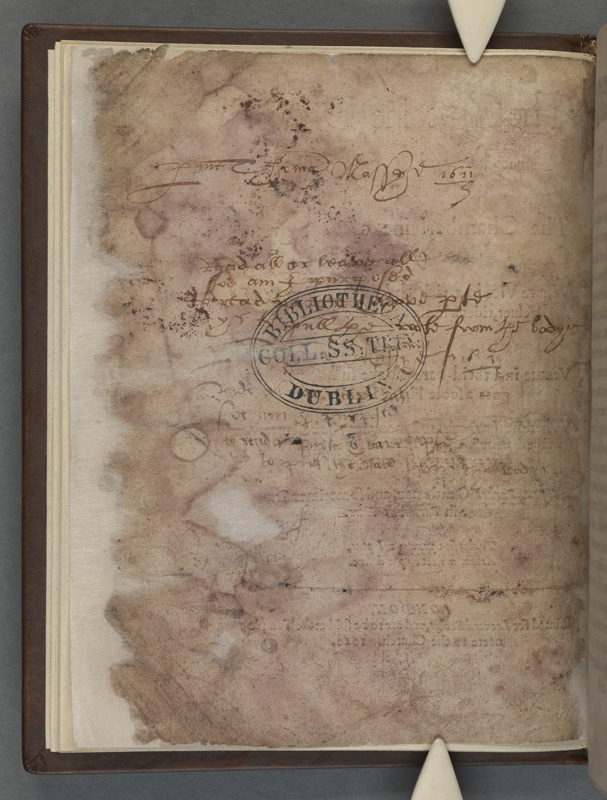
W. Parkes The Curtaine Drawer of the World or The Chamberlaine of that great inne of Iniquity.
London, 1612
This early printed book has been fully conserved to remedy mould damage and a degraded binding.
The opening shows the extent of damage caused by mould which had spread throughout the first pamphlet. It resulted in extensive staining to the paper, as well as the break-down of the paper fibres and sizing. To remedy the damage and provide some strength and stability to the pages, they were washed, deacidified and resized before repair. Japanese paper was toned and used for infilling losses and a thin tissue was used to support the severely weakened areas. All pamphlets in this binding were fully treated before they were interleaved with sections of handmade paper, and then resewn on four raised cords and laced into new boards. The book was covered in full leather (calfskin toned with leather dye). A new shelf number was hand-tooled in gold leaf on the spine.
P.kk.4 no.1

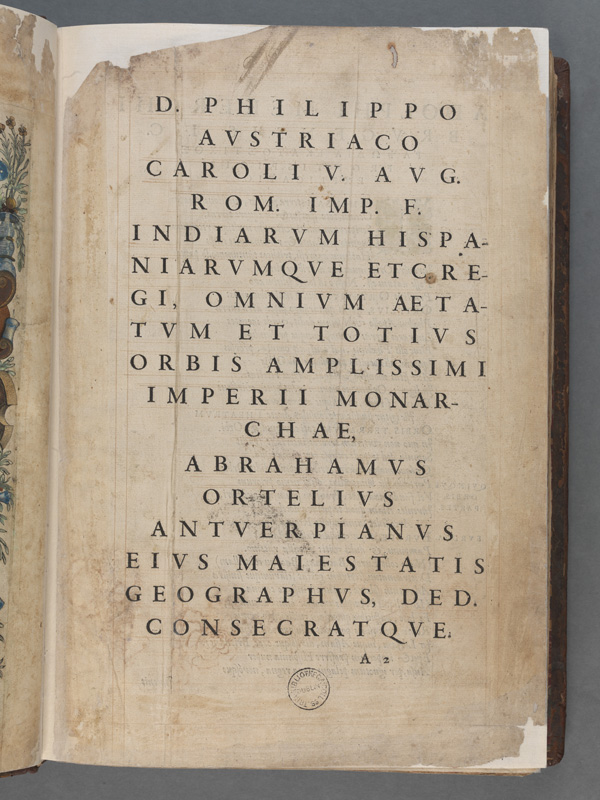
Abraham Ortelius Theatarum Orbis Terrarum
Antwerp, 1584
The opening shows the frontispiece which is an engraving of the author. It was repaired at some stage in the past, with handmade paper strips attached to the damaged mouldy edges. These old repairs caused distortion to the folio and it was necessary to remove them and fully treat the coloured plate. The whole first section of the book was carefully removed and prepared for treatment: the plate was dry cleaned with smoke sponge and then the coloured areas were 'fixed' prior to wet treatment. The plate was washed in deionized water, the old repairs removed, and it was then deacidified and resized and repaired with Japanese papers. After repair the section was re-attached to the book block. The damaged boards were repaired and the book was rebacked with Sirocco native-dyed goatskin leather. The original spine panels were extremely degraded and only the title label was retained on the new spine; the shelf number was hand-tooled in gold leaf.
Gall R.30.31, frontispiece
Greek grammar
15th century
This is a Gothic-style binding in full leather with extensive blind tooling on the covers. The book originally had foredge clasps and the tips of the anchoring nails are visible at the board edge. The original leather thongs used to attach the beech board can be seen in their channels; the conservation repair, employing unbleached linen cord, is also visible. New leather has been grafted on at the turn-in at the top of the board.
MS 925
Greek homiliary
11th century
This substantial vellum manuscript was re-sewn and rebound, possibly in the 14th-century. The Byzantine sewing displays typical features of an extended link-stitch and lacks the sewing supports employed on Western bindings of the same period. A crudely-worked cross has been incised onto the leather cover. The fruitwood binding boards were severely wormed and fragile. The damage was repaired by infilling with microscopic glass beads. The boards themselves are recycled from an earlier manuscript, hence the poor fit; they barely protect the book block.
MS 185, left board and spine

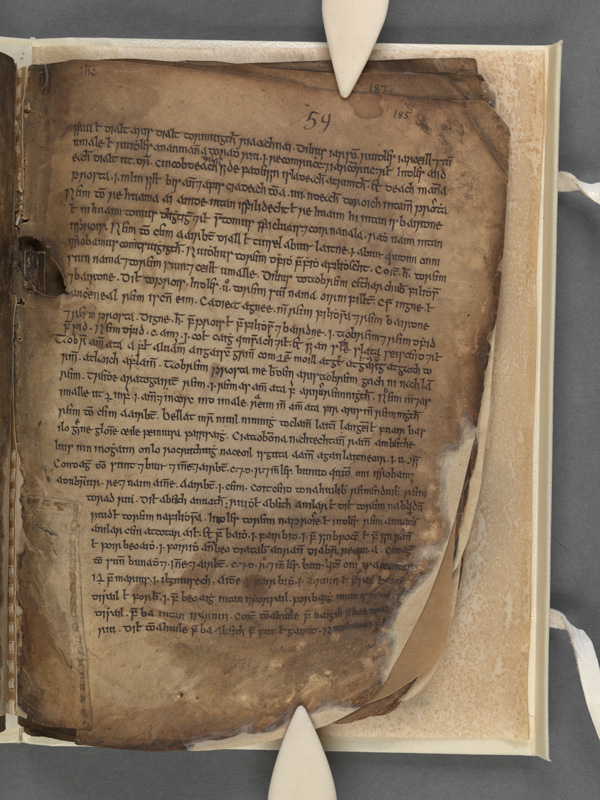

Irish composite manuscript
medieval
The volume on display suffered severe damage to the vellum leaves probably as a result of exposure to very high humidity or even submersion in water; this combined with an inappropriate modern binding rendered it vulnerable and very fragile. Although much of the vellum had gelatinised, through careful hydration and repair the leaves have been stabilised. The cloth binding was replaced with a non-adhesive vellum structure, which greatly reduces the strain on the text block.
Earlier repairs to the vellum can be seen in the form of coloured thread and parchment thongs; this type of repair has been mimicked on the same folio in the most recent treatment.
MS 1363


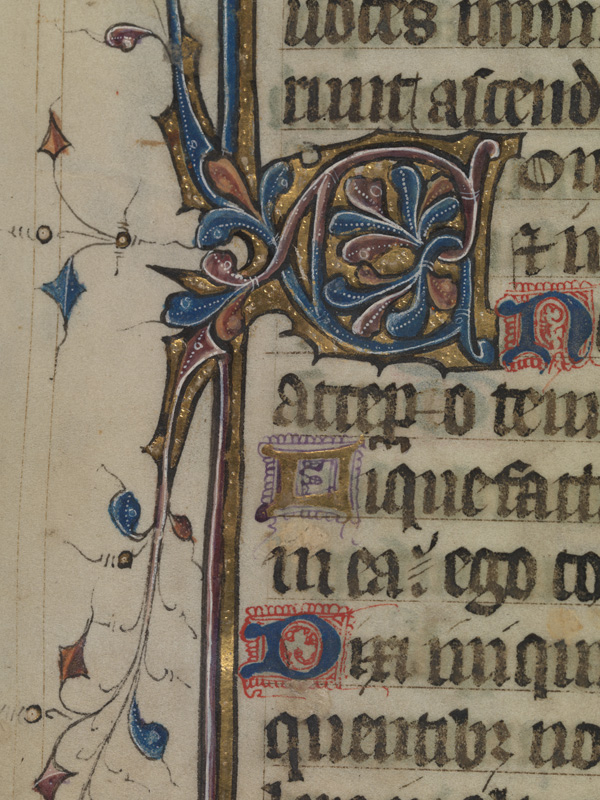

North side
English psalter
14th century
A high standard of decoration and illumination has been executed on the well prepared vellum of this manuscript. The treatment included replacing a 18th-century binding which was causing stress to the vellum leaves, with a non-adhesive vellum binding.
MS 92, folios 57v - 58r



Edward Lhuyd Philological notes
c. 1700
This manuscript is in a full parchment laced-case bookbinding, with a foredge flap. The boards were constructed from re-used paper, including a woodblock printed ream wrapper. The conservation treatment included paper repair, and the consolidation of the sewing structure. Losses to the covers were repaired with toned parchment inlays.
MS 1368
Literary, medical and religious fragments
1727
This manuscript has a longstitch sewing structure. It was constructed from various hand-made papers and the manuscript is in a variety of hands. Prior to conservation treatment the sewing structure was completely broken down. The manuscript was resewn and a new detachable handmade paper cover was added for protection. There are a number of maxims on the margins throughout the manuscript, including the one shown: 'Fortune commonly favours the daring and bold'.
MS 1379


J.M. Synge notebooks
1895-1903
These items, MSS 4416-4423 are part of a collection of 55 notebooks belonging to the playwright J.M. Synge.The conservation treatments of the notebooks included; rebacks, the consolidation of sewing structures, inner joint repair and paper repair. A custom-made archival storage system was also designed to protect the notebooks and to retain their chronology.
MS 4419


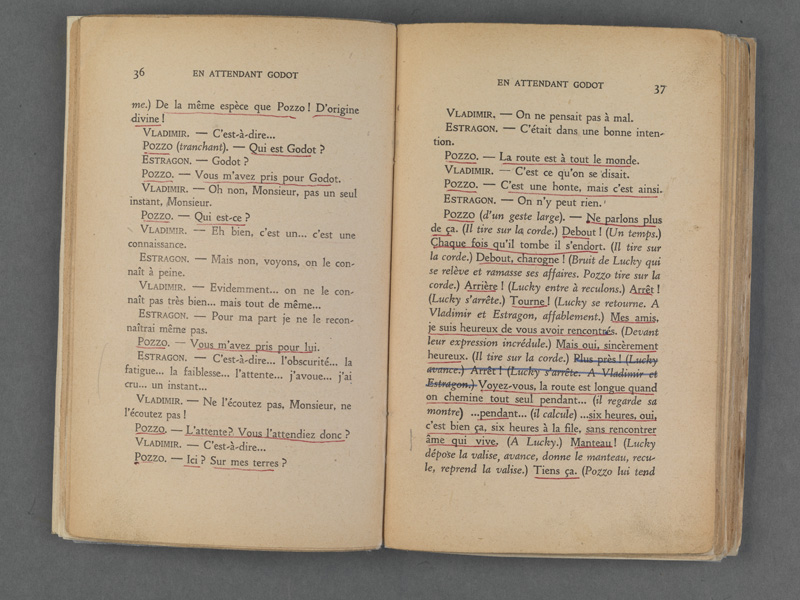
Beckett, Samuel En attendant Godot pièce en deux acte
(Les Éditions de Minuet : 1952)
This is a copy of the first edition of the play and was used by Beckett as a working rehearsal copy for the first performances of the work in 1953.
This book is constructed from mechanical wood pulp paper. It was annotated by Beckett in a variety of media. The conservation treatment took into account water-soluble and alkaline-sensitive inks. The book was re-sewn using a link-stitch and the original covers were preserved.
MS 10495, frontispiece

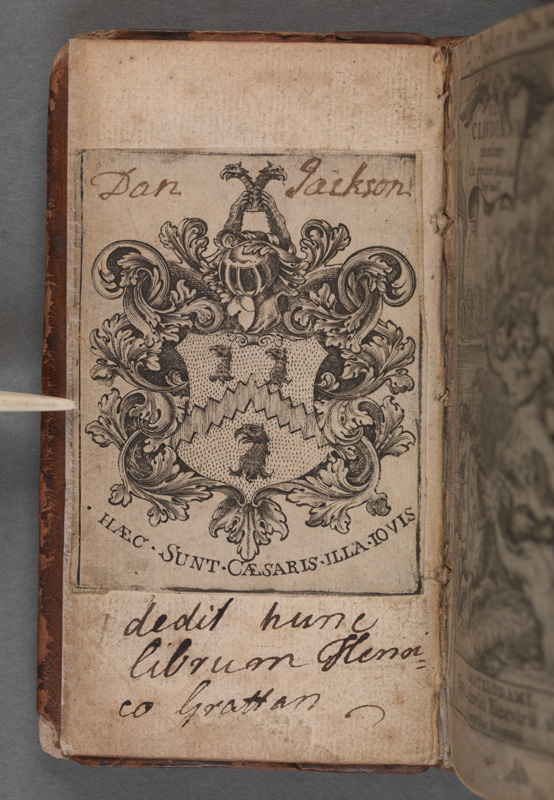
Claudius Claudianus Cl. Claudiani Quae Exstant
Amsterdam, 1650
This book originally belonged to Jonathan Swift, Dean of St. Patricks and author of Gulliver's Travels. The book is a full calfskin leather binding, in a Cambridge panel style. The conservation treatment included rebacking the book, and preserving the original spine piece. Paper repair was carried out to the text block. Note Swift's signature.
OL Safe, frontispiece
Martinus, Lucas Alle Christelige og dyderige jomfruers aere-krants
Hiobenhafn, 1693
This book is a full calfskin binding. There is extensive blind-tooling on the boards. The book has wooden boards, gilt and gauffered text block edges and clasps. As part of the book's conservation treatment the clasp straps were repaired, the covering leather was consolidated and the inner joints were repaired.
C.o.15



Sebastian Brandt Stultifera Navis
Basle, 1497
This is one of the first printed books, known as an incunabula. It is in a quarter alum-tawed leather binding, with wooden boards and a clasp. As many earlier books have been rebound over the centuries, it was important in the conservation treatment of this book to retain and preserve as much original features as possible. The woodcut depicts the book fool.
Press.A.4.4, folio 11v




